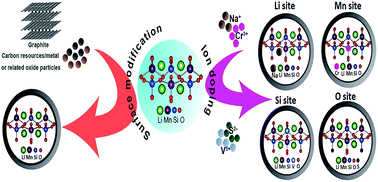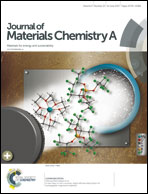Modification of Li2MnSiO4 cathode materials for lithium-ion batteries: a review
Abstract
Diversified and extended application of lithium-ion batteries require the development of innovative electrode materials with excellent electrochemical performances, which, to a large extent, depends on the cathode materials. In recent years, Li2MnSiO4 has attracted widespread attention due to its high thermal stability, abundance, low-cost and environmentally friendliness. Some of the most attractive characteristics of Li2MnSiO4 are that it possesses the high theoretical capacity of 333 mA h g−1 and is much easier to achieve the transformation of Mn2+/Mn3+ and Mn3+/Mn4+ within the voltage range of the electrolyte system currently used in Li-ion batteries compared with the other lithium transition metal orthosilicates. However, Li2MnSiO4 suffers from the intrinsic drawbacks of low electronic/ionic conductivity and capacity fading upon cycling, limiting its application in next-generation lithium-ion batteries. In this review, the recent efforts to improve the electrochemical performances of Li2MnSiO4 were introduced. In particular, we provided a critical overview of the effective modification methods related to the Li2MnSiO4 cathode materials. The synthesis, structure, morphologies and physicochemical (especially electrochemical) performances of these promising cathode materials have been discussed in detail. We anticipate that this review will shed light on the sustainable development of high-performance and low cost Li-ion batteries.

- This article is part of the themed collection: Recent Review Articles


 Please wait while we load your content...
Please wait while we load your content...